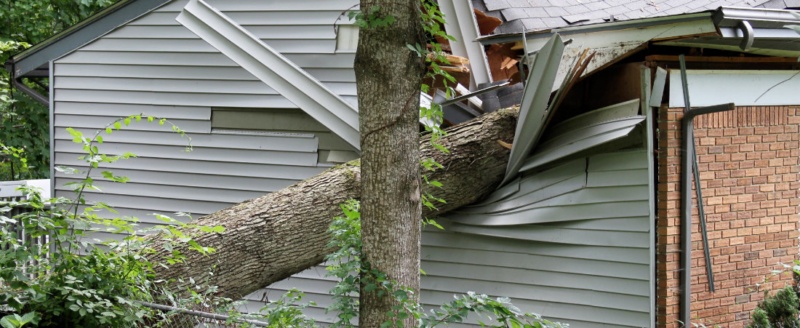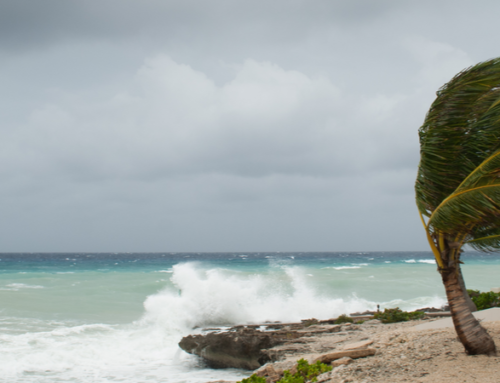This article was written by guest blogger Loretta Worters.
There are a lot of homeowner’s insurance myths floating around, and it can be hard to separate fact from fiction. Whether you’re shopping for homeowner’s insurance for the first time or updating your existing policy, here are a few misconceptions to keep in mind about what homeowner’s insurance covers:
Myth #1: Homeowner’s insurance doesn’t cover for acts of God.
Unpredictable and uncontrollable weather or disasters such as hurricanes, hail, and fire are considered perils and are covered under a standard homeowner’s policy. However certain specific perils, such as earthquakes and floods, are not covered under a standard policy, so you may need additional coverage.
Flood coverage is available as a separate policy from the National Flood Insurance Program (NFIP) and from a few private insurers. The NFIP provides coverage for up to $250,000 for the structure of the home and $100,000 for personal possessions. There is a 30-day waiting period before the coverage takes effect, so don’t wait for an impending storm to buy a flood insurance policy.
Earthquakes are also not covered under standard U.S. homeowner’s insurance policies. However, you can purchase a supplemental policy from an insurance company that covers earthquake damage. In California, homeowners can secure coverage from the California Earthquake Authority (CEA), a privately funded, publicly managed organization, as well as from private insurers.
Myth #2: Homeowner’s insurance covers termites, mold and other maintenance issues.
When you’re shopping for insurance, remember that home maintenance issues are excluded under a standard homeowner’s policy, as they typically result from neglect and a failure to properly maintain a property. Termites and insect damage, bird or rodent damage, rust, rot, and general wear and tear are examples of damages not covered under a standard policy.
Additionally, mold damage is specifically excluded from standard homeowner’s policies. Mold contamination is covered only if it is the result of a covered peril. For example, the costs associated with removing mold caused by water from a burst pipe are covered under the policy because water damage from a burst pipe is a covered peril in a standard homeowner’s policy. But mold caused by water from excessive humidity, leaks, condensation, or flooding is a maintenance issue for the property owner and is not covered by the policy.
Myth #3: Jewelry will be covered by a homeowner’s insurance policy if it’s stolen.
Most standard homeowner’s and renter’s insurance policies include coverage for personal items such as jewelry. However, many policies limit the dollar amount for the theft of personal possessions to $1,000 to $2,000. This means you would be covered if your jewelry were destroyed by a disaster listed in your homeowner’s policy, such as a fire or hurricane, but if it were lost or stolen you would need separate insurance.
To properly insure jewelry, consider purchasing additional coverage through a floater or an endorsement. In most cases, these policy add-ons would also cover you for “mysterious disappearance.” This means that if your ring falls off your finger and is flushed down a drain, or if the ring is lost in another way, you would be financially protected.
Floaters and endorsements are available as additions to existing homeowner’s or renter’s insurance policies, carry no deductibles, and frequently include the option to have the insurance company replace the item for you. Some companies also offer a standalone policy that you can purchase even if you don’t have homeowner’s or renter’s insurance. You will likely need to have the jewelry appraised to ensure you purchase enough coverage, so be sure to ask your agent for advice on finding a reputable appraiser.
Myth #4: You should use the purchase price of your home to determine your homeowner’s policy coverage.
There is no correlation between the market value of your home and the amount of homeowner’s insurance needed. Market value is used to determine the selling price of the home, while rebuilding costs determine the amount of property insurance required for full protection and peace of mind. In today’s stagnant real estate market, the cost to rebuild a home can greatly exceed its market value.
Lowering your homeowner’s insurance to match your home’s market value may seem like a way to save money, but it can put you at financial risk. If your homeowner’s insurance coverage does not cover the cost of rebuilding your home, you could face high out-of-pocket expenses after a catastrophic event, such as a house fire or hurricane.
Many insurance companies offer a guaranteed replacement cost policy. Some of these policies have a cap of 120 percent of your insurance policy’s coverage limit. For example, if you have $200,000 worth of coverage for your home and had a total loss, a guaranteed replacement cost policy would pay up to $240,000 to cover rebuilding costs.
Myth #5: Damage to a cemetery headstone is not covered under a homeowner’s policy.
If a grave monument on a family plot has been vandalized or otherwise damaged—struck by lightning, for example—it may be covered, depending on your insurance company. Many companies provide up to $5,000 for damage to a grave marker, including headstones, monuments, and urns. There’s no additional charge for this coverage, but keep in mind that policies generally exclude damage resulting from a catastrophe, such as a hurricane.
There are lots of myths out there, but your insurance agent should be able to answer all of your questions. Regularly review your coverage—especially if you’ve just had a big life change, such as getting married or having a new baby—and update your homeowner’s policy and other policies when necessary.
Loretta L. Worters is vice president of the Insurance Information Institute, whose mission is to improve public understanding of insurance – what it does and how it works. Ms. Worters is an author and woman’s advocate frequently quoted in leading publications including The Wall Street Journal, The New York Times, USA Today, Business Week, Forbes, U.S. News & World Report, and appears regularly on television networks including ABC, CNBC, CNN, and Fox. Follow her on Twitter at @LWorters.






